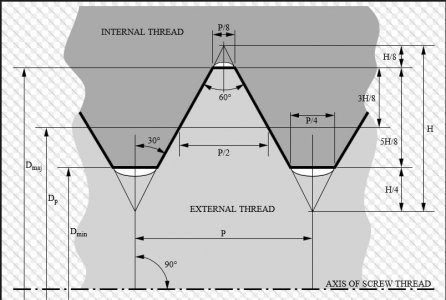- Joined
- Jun 12, 2014
- Messages
- 401
A couple of quick hacks on selecting the correct drill bit for tapping:
 Steve Shannon
Steve Shannon 
It will if you convert tpi to pitch. 16 tpi =1/16", 3/8" -1/16" = 5/16". This is the recommended tap drill size.Diameter minus pitch (4mm -.7) may equal tap drill size in Blighty, but 3/8 -16 won't work in Imperial threads. Glad to see discussion of drills and taps.
Wreck, You are forgetting that the major diameter of the thread is not at the apex of the equilateral triangle. The triangle is truncated with a flat equal to P/8 in width, P being the thread pitch. This defines the major diameter. The base of the triangle is truncated with a flat P/4. Which defines the minor diameter.A 60° V-thread is an equilateral triangle, the relationship between the height and the base is .866 therefore the depth of the sharp V of a 16 TPI thread would be .0625 X .866 =.054, in the case of a 3/8-16 thread this will be a minor diameter of .321,Threads in the ANSI standards are measured by the Pitch Diameter for all practical purposes.

